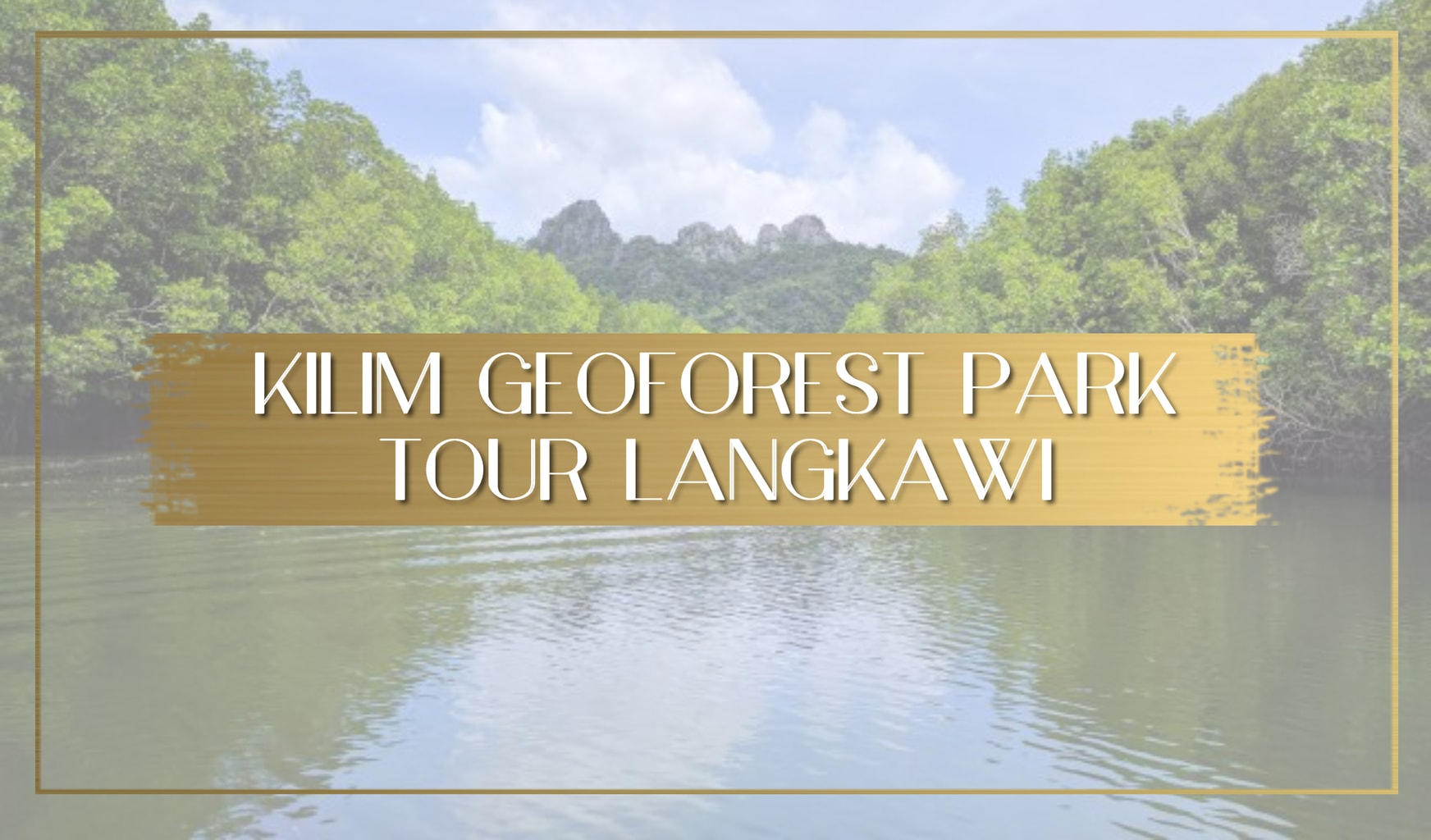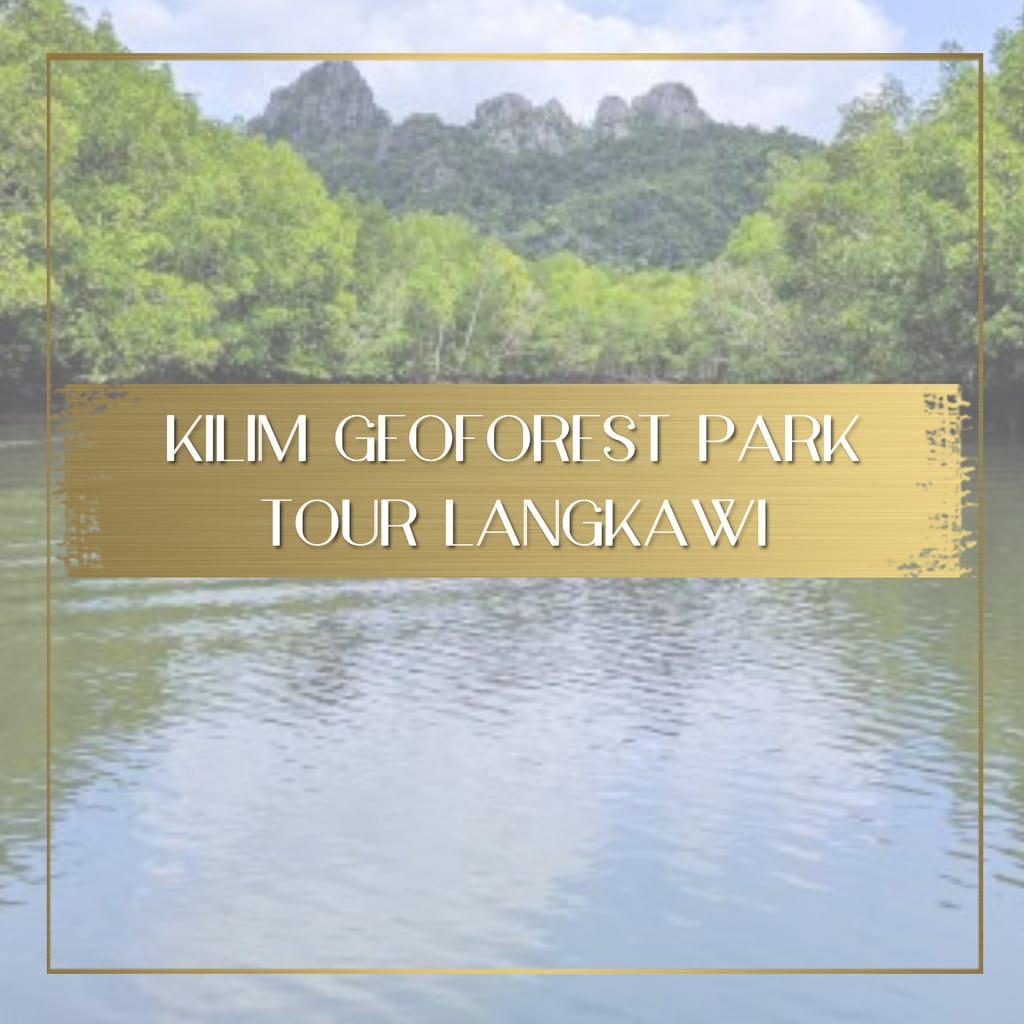
Langkawi’s mangroves at Kilim Geoforest Park are a signature part of the island. They are tall, lush and rich in wildlife and they are one of the three parks that contribute to the island’s UNESCO status as the 4th World Geopark. The other two parks are Machinchang Cambrian Geoforest Park and the Dayang Bunting Marble Geoforest park.
And don’t forget to read our guide on 10 Essential Things Travelers Must Know Before Visiting Malaysia.
About Langkawi’s Kilim Geoforest Park
The World Geopark Network is a UNESCO assisted network of parks with special geological interest currently made up of six geoparks in China, the United Kingdom, Japan, Germany, Canada and Malaysia. This world recognition is the pride of every local in Langkawi and a real motivation to keep it clean and safe from threats to its conservation.
Because of their beauty and environmental interest, the mangroves and the ecoforest are no doubt, must do activities if you are visiting the duty-free island.
It is this popularity which has attracted several tour companies to offer tours of all sorts and shapes, but Dev’s Adventure Tours is definitively the best and I say this after having observed how the other guides led their tours and how they interacted with nature and their guests.
It is by no means the most affordable, but, as with everything in life, you get what you pay for and a few extra ringgit will make the difference between an average superficial experience and a memorable one, the difference between wandering the paths and getting the inside scoop on what’s around you. Dev’s guides are some of the most passionate I have ever met in my travels.
The Kilim Geoforest Park is made of three river estuaries that are interconnected and surrounded by beautiful green mangroves, caves of varying sizes and interest and ancient karst rock formations some of which have small beaches. The park borders the Andaman Sea, a stretch of sea that is shared with Thailand’s famous Phuket and Phi Phi islands. The limestone rock formations here are millennia old.
Touring Kilim Geoforest Park
The mangrove tour usually starts with a hotel pickup and a drive to the northern part of the island where the mangroves are. Most tour companies will pick you up from your hotel and drop you off. If you’re also looking for a place to stay, here is our list of the best luxury hotels in Langkawi.
There are boat tours, kayak tours and also bicycle tours of the mangroves. I joined one of the boat tours which took place on longtail covered boats in which you will be kept dry and protected from the sun.
The boat tour consists of three stops: the bat caves, the eagle feeding spot and an island in the open waters of the Andaman Sea. Sometimes, depending on the tides, the guide may stop at a crocodile cave as well but that was not the case for our tour. In total, the tour took about 5.5h from pickup to drop off.
Stop 1: The bat caves
We started with a toilet pit stop by the pier before embarking on the tour as there are no toilets until lunch break. We then boarded the longtail boats and a quick ride through the mangroves took us to the bat caves. Here, a few species of bats fill the ceilings of an ancient cave that also has a few stalactites and stalagmites built over centuries.
We learned a lot about the cute bats and I will admit that Kieran, our guide, awoken a love for the little animals I did not have. I had previously always associated them with smelly poo and sharp teeth, and of course, Dracula.
But his explanations of how they live, why they hang upside down and the zooming into the mother’s carrying the little ones made me think of them in a renewed kindered light. The power of a loving naturalist is surely priceless in sharing the beauty of wildlife and nature.
Kieran was incredibly passionate about the mangroves and Langkawi and it showed in every single one of his comments. And he had many! He spent the 5h entertaining us with stories, anecdotes and bottomless knowledge. He compared Langkawi and Malaysia with our countries of origin and he showed incredibly in-depth knowledge about the flora and fauna of the area.
At the bat caves I also understood why Dev’s Adventure Tours is the best company to explore the mangroves. I had already been told by my friend and local Langkawi Blogger Vanessa, of The Island Drum, that the naughty monkeys can be mischievous and the guests from other tour groups, of which there were many, were being pickpocketed and bothered by our hungry and very smart cousins.
Kieran had told us over and over again that we should not bring anything with us and we were only allowed cameras to the bat caves and the mangrove area surrounding it. Everyone else had all their belongings with them and, Langkawi being a tropical island, bottles of water and drinks which were the center of attention of the macaques. Oh boy were they interested.
Kieran kept telling all the other visitors to hide their water bottles, and even helped a few stuff them away in their backpacks while the other guides could not be bothered to care. It was a living example of a good guide vs. a careless one. Needless to say, the monkeys stole a few bottles and caused a stir.
It could also have been dangerous as I have experienced before in Singapore’s MacRitchie Reservoir where there are many monkeys and once, one stole my lunch sandwich from my hand. The bottles stolen by the monkeys unavoidably ended up in the fenced off mangroves littering the otherwise beautiful area. Education plays such an important role in such delicate ecosystem.
At the mangroves we also learned about the loud cicadas and how they can live with such noise. Apparently, they are deaf to their own noise. No wonder they can be generating such incredibly high pitched noise and not be bothered.
After going through the caves, we got up and close with the mangroves. Langkawi’s mangroves are tall and thick, not the usual skinny and weak ones. They are said to have helped save the island from the 2004 Boxing Day tsunami which destroyed Banda Aceh and many other parts of Indonesia and Thailand.
In Langkawi, only one person died. The tsunami hit the island during low tide when 104 islands are above water, as opposed to the 99 islands at high tide, and that also helped protect the land from the high waves. Apart from the mangroves and the tides, Langkawi was lucky enough to have a tidal bridge by the airport that stops the waves before the shore.
Stop 2: The Eagle Feeding Spot
Back on the boat, we headed to the eagle feeding spot. On the way, we spotted a bright blue kingfisher bird, totally beautiful. Their colour made it hard for them to hide from the tourists’ eyes. Kieran and the boatman also spotted viper snakes, twice, on the branches. How they managed to do that, with their camouflaged colors against the grey, muddy green mangroves was quite impressive. We also stopped for large monitor lizards.
Eagles used to be threatened by human feeding and lost their ability to fish for themselves because of people giving them food. However, thanks to the tours and conservation efforts they have slowly become healthier and returned to their feeding patterns.
There is a spot in the mangroves where you can see them dive into the water and fish from the surface. Because they have white bellies, the fish confuse them with the sky and can’t see them coming. It is a gorgeous spectacle to see them come down and pick a fish in a synchronised way as if they were showcasing a dancing display.
Stop 3: The Andaman Sea + floating fish farm and restaurant
After observing the eagles dance we headed out into the open Andaman Sea. The mangroves are connected to the sea and to Thailand which you can spot in the distance on a clear day. The karst formations of the Kilim Karst Geoforest Park are beautiful.
Big rocks jutting out of the emerald green sea towering tall above your head as you zip through on the longtail boat. It was a majestic landscape. We passed a few small beaches and then headed to a slightly larger one where we stopped for some stranded, Robinson Crusoe, island experience.
The water was clear and pristine here except for a few plastic bottles other day-visitors had dumped. It was a pleasant stop before our lunch. Talking of which, we stopped at a floating fish farm and restaurant spot on the water on our way back to have some tom yum soup and fried chicken with rice before returning to firm land.
With a full stomach, Kieran took us to have a look at the many fish species grown in the farm, some of them were absolutely massive. A final stop at the Kilim Karst Geoforest Park sign completed our tour, a very educational and interesting way to spend a morning in Langkawi.
Click here to book with Dev’s Adventure and here to see more photos of Casa Del Mar.
Our trip through the mangroves was enjoyed courtesy of Casa Del Mar, a fantastic resort in Langkawi and your home by the sea. As always, all opinions are our own.
